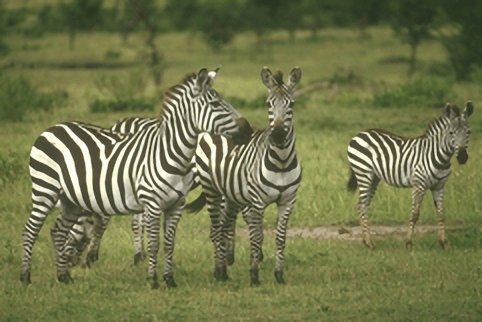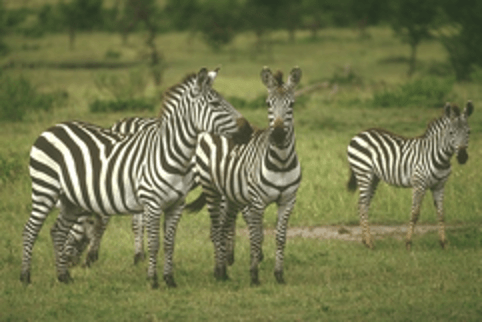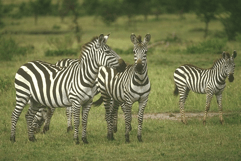The basic idea of super-resolution imaging is the ability to scale up images and maintain visual quality either for people to view or for computer image analysis.
Super-resolution is important due to the diffraction limit, the limit on the resolution an optical hardware can reach due to the diffraction of light. The ability to improve the resolution via an algorithm means that you can subvert that limit to increase the resolution.
So why talk about super-resolution scaling? Besides it being a pretty cool topic, our Java imaging SDK JDeli added support for Super Resolution and you might find that it is what you need to get those high quality images.
So let’s run a little experiment. Let’s take this image of some zebras and run it through JDeli’s super-resolution scaling and Java’s bicubic scaling.
Here is the initial image:
For JDeli super-resolution I am using the following code:
BufferedImage image = JDeli.read(new File("Zebras.png"));
image = SuperResolution.scale2x(image);
JDeli.write(image, JDeli.OutputFormat.PNG, new File("Zebras-JDeli-Scaled.png"));
For Java bicubic I am using the following code:
BufferedImage src = JDeli.read(new File("Zebras.png"));
final int w = src.getWidth();
final int h = src.getHeight();
BufferedImage dst = new BufferedImage((w * 2),(h * 2), BufferedImage.TYPE_INT_ARGB);
final AffineTransform at = AffineTransform.getScaleInstance(2.0, 2.0);
final AffineTransformOp ato = new AffineTransformOp(at, AffineTransformOp.TYPE_BICUBIC);
dst = ato.filter(src, dst);
JDeli.write(dst, JDeli.OutputFormat.PNG, new File("Zebras-Java-Scaled.png"));
End result side by side comparison: (please click on the images to see the difference)
| JDeli super-resolution | Java bicubic |
 |  |
As you can see, super-resolution maintains the quality of the initial image, whereas bicubic ends up in a more blurred image. At IDRsolutions, we’re very happy with the results that you get with JDeli. What do you think?
Why use JDeli to read and write Images in Java?
JDeli offers a range of advantages over ImageIO and alternatives, including:
- prevent heap related JVM crashes
- support for additional image formats such as Heic
- reduce output file size
- improve read/write performance
- create smaller files
- control over output
- support threading
- superior image scaling algorithms
Our software libraries allow you to
| Convert PDF to HTML in Java |
| Convert PDF Forms to HTML5 in Java |
| Convert PDF Documents to an image in Java |
| Work with PDF Documents in Java |
| Read and Write AVIF, HEIC, WEBP and other image formats |


Definitely an improvement over Java Bicubic in terms of clarity. To my eye it looks like the zebra in the forefront and the zebra in the background on the right have had their rumps over-enhanced in terms of colour and it looks artificial.